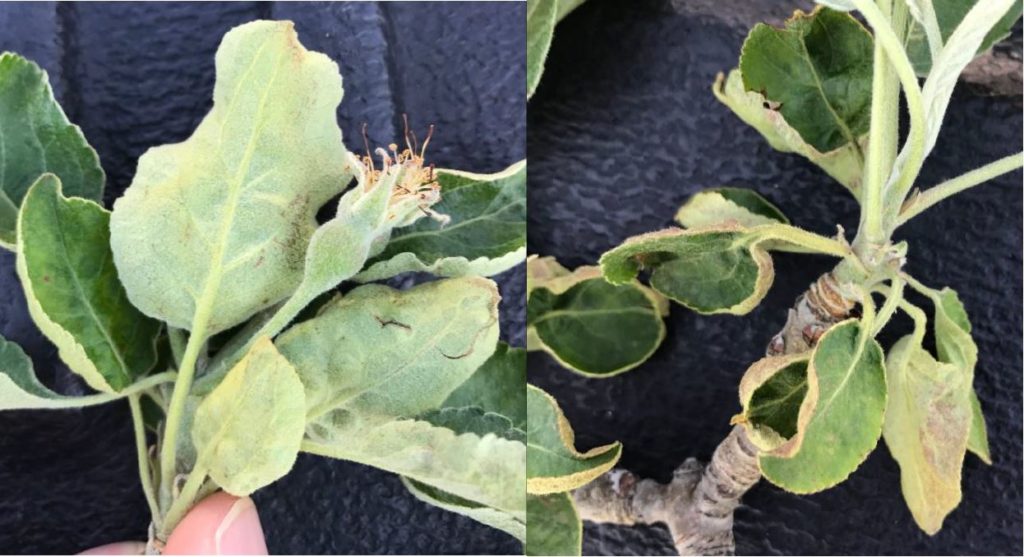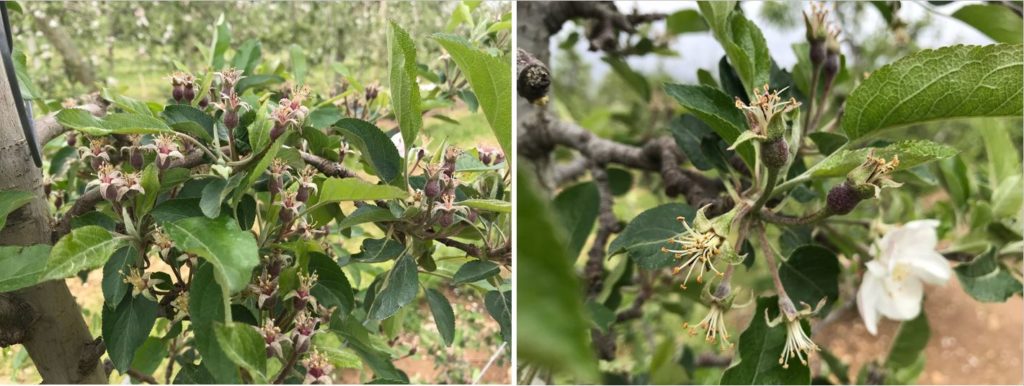Apple Thinning Update: 4/25/18
go.ncsu.edu/readext?523502
en Español / em Português
El inglés es el idioma de control de esta página. En la medida en que haya algún conflicto entre la traducción al inglés y la traducción, el inglés prevalece.
Al hacer clic en el enlace de traducción se activa un servicio de traducción gratuito para convertir la página al español. Al igual que con cualquier traducción por Internet, la conversión no es sensible al contexto y puede que no traduzca el texto en su significado original. NC State Extension no garantiza la exactitud del texto traducido. Por favor, tenga en cuenta que algunas aplicaciones y/o servicios pueden no funcionar como se espera cuando se traducen.
Português
Inglês é o idioma de controle desta página. Na medida que haja algum conflito entre o texto original em Inglês e a tradução, o Inglês prevalece.
Ao clicar no link de tradução, um serviço gratuito de tradução será ativado para converter a página para o Português. Como em qualquer tradução pela internet, a conversão não é sensivel ao contexto e pode não ocorrer a tradução para o significado orginal. O serviço de Extensão da Carolina do Norte (NC State Extension) não garante a exatidão do texto traduzido. Por favor, observe que algumas funções ou serviços podem não funcionar como esperado após a tradução.
English
English is the controlling language of this page. To the extent there is any conflict between the English text and the translation, English controls.
Clicking on the translation link activates a free translation service to convert the page to Spanish. As with any Internet translation, the conversion is not context-sensitive and may not translate the text to its original meaning. NC State Extension does not guarantee the accuracy of the translated text. Please note that some applications and/or services may not function as expected when translated.
Collapse ▲With some exceptions, most varieties had a moderate to heavy bloom density in western NC. While I would typically promote the use of a petal fall thinner application on most varieties with a heavy return bloom, this year will be an exception in some situations.
Spring 2018 has been rather cool, resulting in a protracted bloom period. As indicated in a previous post, cold damage was observed at some sites. Additionally, pollinator activity was somewhat limited during bloom, likely due to the observed cool temperatures and high winds. In situations where initial fruit set is unclear/marginal, do not apply chemical thinners until fruit set and active fruit growth is observed.
On early blooming varieties (i.e. Pink Lady, Granny Smith, some Gala, etc.), I’ve observed damage to spur leaves. This damage likely occurred due to the cold temperatures over the past two weeks. When damaged, spur leaves appear to be distorted (abnormal shape and leaf curling), and there is some visible browning/yellowing on the underside of the leaves (see image above). While this injury may seem minor, spur leaves play a very important role in fruit set and are the primary source of carbohydrates during early fruit development. In addition, absorption of thinning chemicals by damaged leaves is likely greater than when compared to undamaged leaves. In short, I would exercise caution when thinning trees that exhibit injury to spur leaf tissue. This is especially true with Granny Smith, Pink Lady, and other “easy-to-thin” varieties.

Sub-lethal cold injury to spur leaves. Note the abnormal leaf shape, leaf curling, and visible browning.
In situations where a petal fall thinner application is appropriate (heavy bloom density, limited frost damage, apparent strong initial fruit set, etc.), a petal fall application of carbaryl has been recommended widely as a safe and effective early thinning strategy. Early thinning can confer significant benefits to apple growers including increased fruit size and improved return bloom. In most years, there is very little risk of over-thinning at this timing. When using a liquid formulation, use a rate of 1 pint per 100 gallons (4 lb a.i. per gallon product; equivalent to half a pound of active ingredient in 100 gallons). Wait to apply carbaryl at 80% petal fall or later, since this product is toxic to bees. Do not apply carbaryl until bee hives are removed from the orchard. Also, consider making the application at the end of the day, when bees are not actively foraging.
If you choose to apply a petal fall thinner on some varieties, use of the Carbon Balance Model is not a useful tool at this timing. Apple trees use stored carbohydrate reserves until around bloom, so the daily carbohydrate balance up to this time is probably not important. Stored reserves run out near bloom, and current photosynthesis starts to play an increasingly important role in supplying the carbohydrates required for growth of spur leaves, shoots and flowers/fruit. The carbohydrate balance is not going to have a significant effect on the activity of thinning sprays at bloom or petal fall. However, from around 8 mm fruit diameter on, the carbohydrate balance will influence thinning activity.



